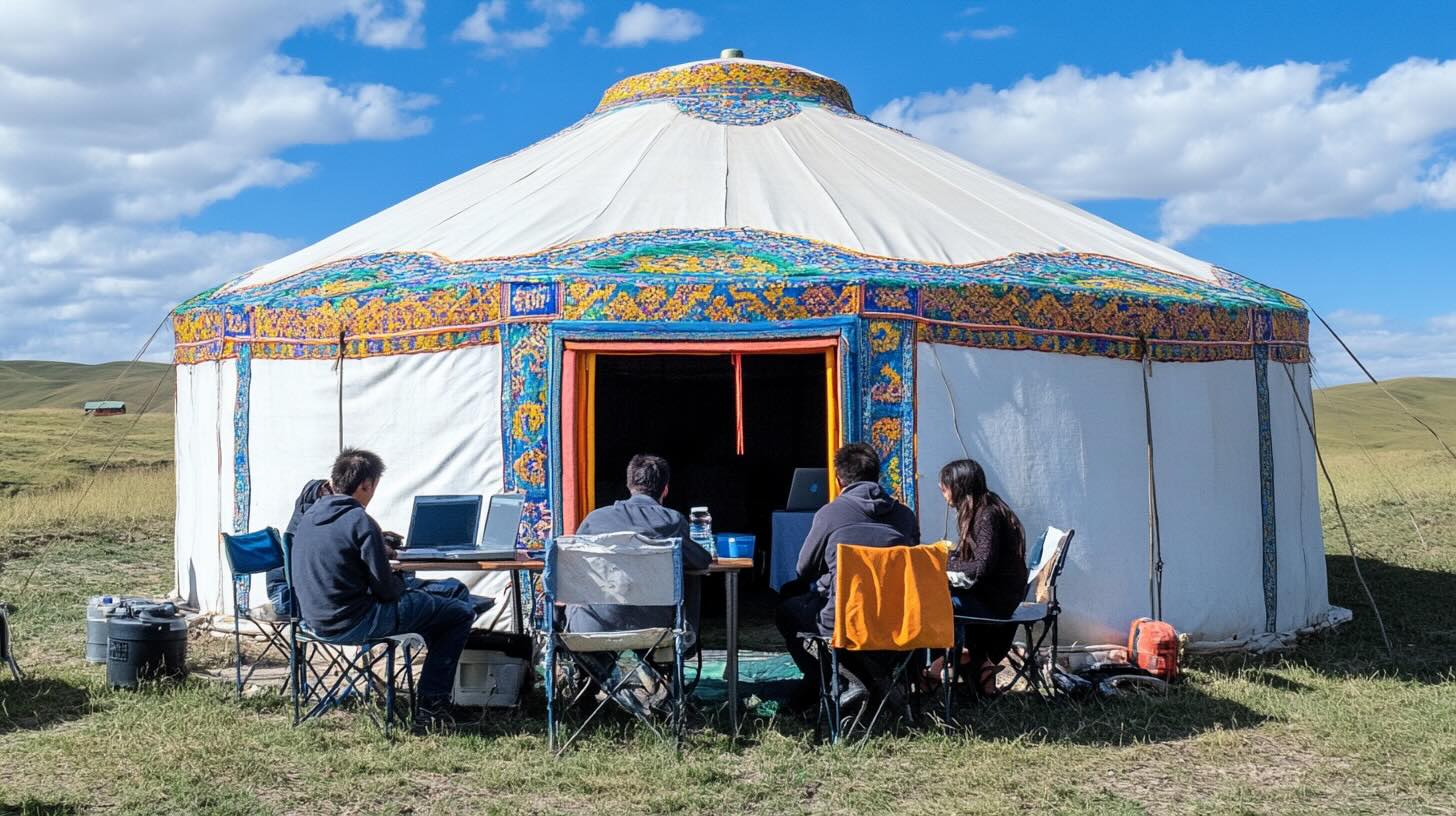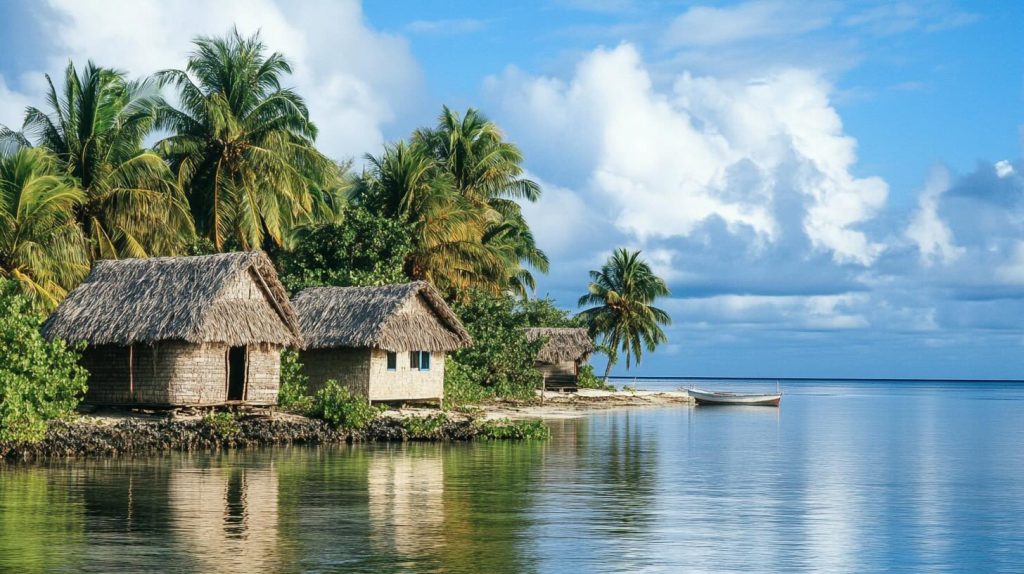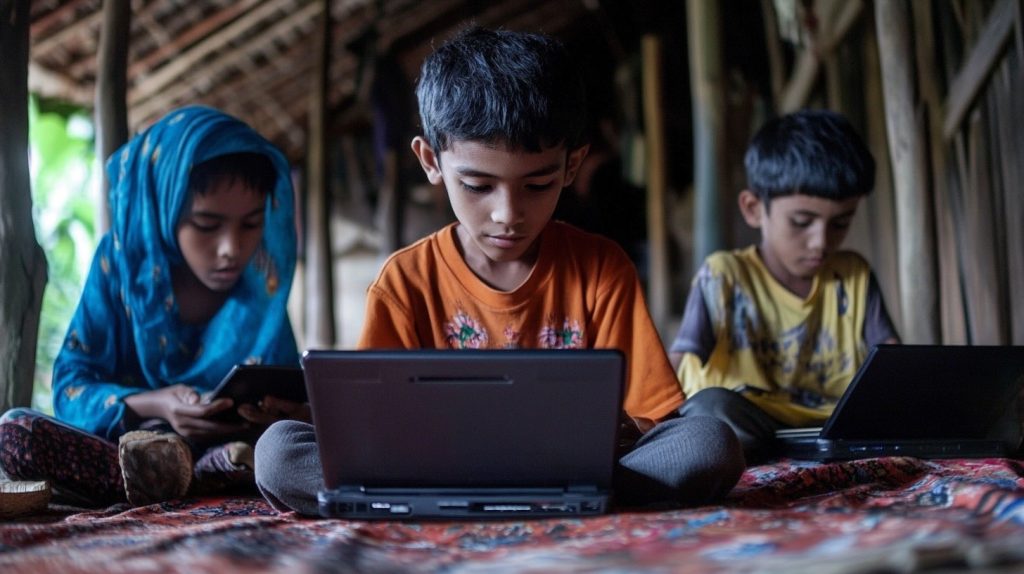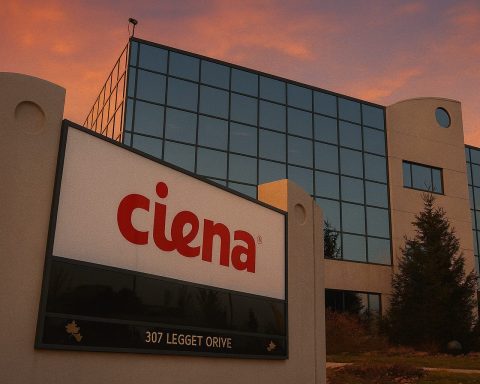- Univision LLC leads Mongolia’s internet market with about 62% market share and is part of the Unitel group, offering fiber-optic broadband and IPTV.
- MobiCom Corporation (including Mobinet) is the second-largest ISP with roughly 15% market share, and operates both mobile networks and internet services.
- Skymedia Corporation holds around 10% of the ISP market and Mobinet LLC about 3%, with smaller providers like ONDO filling the rest.
- In mobile, Mongolia is served by four operators—MobiCom, Unitel, Skytel, and G-Mobile—with 2014 data showing MobiCom at about 39.5% and Unitel at about 35.5% of mobile subscriptions.
- About 69% of Mongolia’s population lives in urban areas, while cellular networks cover 23.8% of the habitable land, leaving a large portion of the countryside without signal.
- The Universal Service Obligation Fund funded mobile expansion between 2010 and 2013, extending access to 42 soums and 35 remote settlements in 18 provinces with new towers, fiber links, and power lines.
- Unitel started Mongolia’s first 5G trial base station in September 2022 in central Ulaanbaatar; MobiCom in 2023 set up 5G experience zones, and full commercial 5G rollout is expected in 2024–2025, with 4G already covering about 88% of the population and 24% of land area.
- In July 2023, SpaceX was licensed to operate Starlink in Mongolia, Starlink went live around March 1, 2024, with speeds from 50 Mbps to 150+ Mbps, a dish kit around $450, and a monthly $54 plan.
- Mongolia signed a contract with Thales Alenia Space in October 2023 to build Chinggis Sat, a Ku-band communications satellite planned to launch by 2027 at 113.6° East for nationwide coverage and greater domestic satellite autonomy.
- As of early 2024, Mongolia’s median fixed broadband speed was 68.4 Mbps (up about 30% year‑on‑year) while the median mobile speed was 15.5 Mbps, and typical home broadband plans cost about $15–$16 per month.
Major Internet Providers and Market Share
Mongolia’s internet market is dominated by a few key players. Univision LLC leads with about 62% of the market, making it the largest Internet Service Provider (ISP) in the country. Univision (part of the Unitel group) offers fiber-optic broadband and IPTV services, underpinning its broad market reach. The second largest ISP is MobiCom Corporation(including Mobinet), with roughly 15% share. MobiCom is a pioneer in Mongolian telecommunications and operates both mobile networks and internet services. Other notable ISPs include Skymedia Corporation (around 10% share) and Mobinet LLC (about 3%). Smaller providers like ONDO (Unitel’s fixed-line brand) and others make up the rest. This relatively concentrated market means competition has historically been limited – the Internet Society rates Mongolia’s market competitiveness for internet services as “Poor”.
In the mobile sector, four operators serve the country: MobiCom, Unitel, Skytel, and G-Mobile. MobiCom and Unitel together account for the majority of mobile subscribers (in 2014 MobiCom had ~39.5% and Unitel ~35.5% of the mobile market). Unitel, founded in 2005, quickly grew to be the second-largest mobile operator and also offers broadband via its Univision service. Skytel and G-Mobile are smaller players focusing on niche markets (Skytel initially on CDMA networks, and G-Mobile on rural coverage). Despite multiple providers, the ISP landscape for broadband has one clear front-runner (Univision), with others competing for the remaining share.
Infrastructure Development and Coverage: Urban vs. Rural
Rolling out internet infrastructure across Mongolia’s vast and sparsely populated territory is a major challenge. Mongolia is the world’s most sparsely populated independent country – a fact that poses a “serious constraint to country-wide Internet deployment”. The population of ~3.4 million is spread over a land area as large as Western Europe, making infrastructure costly per capita.
Urban centers like Ulaanbaatar (the capital, home to ~45% of the population) enjoy extensive internet infrastructure. Ulaanbaatar and other cities are connected by a national fiber-optic backbone that links all 21 provincial centers (aimag capitals) and many smaller towns. High-capacity fiber routes (often along road and rail corridors) and microwave relay towers connect urban networks together. As a landlocked country, Mongolia connects to the global internet via terrestrial fiber links through neighboring countries’ networks (transiting through China and Russia) and via satellite backup. Redundancy is built in through multiple cross-border fiber routes to maintain connectivity.
Rural areas, by contrast, face sparse coverage. While roughly 69% of Mongolia’s people live in urban areas, the remaining nomadic and rural population is dispersed across the steppe. Cellular networks currently cover only 23.8% of Mongolia’s habitable land area – meaning that over three-quarters of the territory has no cell signal [1]. Remote herder communities often live far from any communications infrastructure. Many nomadic families must travel to higher ground or closer to towns just to get a mobile phone signal. In one vivid example, a herder mother would drive 2 km toward the soum (district) center until a 4G signal appeared so her daughter could attend online classes, then stop and let her study in the car. This illustrates the stark digital divide in physical coverage.
To improve rural connectivity, the government and operators have invested in creative solutions. Microwave radio links connect far-flung villages where laying fiber is impractical, and VSAT satellite terminals provide internet to some remote soum centers and mining camps. Mongolia’s Universal Service Obligation Fund (USOF) subsidizes telecom expansion into sparsely populated areas. Between 2010 and 2013, USOF-funded projects extended mobile network access to 42 soums and 35 remote settlements in 18 provinces, installing new towers, fiber links, and power lines where needed. Thanks to such efforts, even some very remote communities now have at least basic voice and data service. Still, coverage gaps persist outside of settlements. The government is pushing to cover dozens more rural sub-districts (bags) each year with either cellular or satellite service [2] [3]. Power infrastructure is another factor – many herding areas lack electricity, so powering cell towers or even a satellite receiver can be difficult.
Overall, Mongolia’s core internet infrastructure is modern in cities (fiber-to-the-home, 4G/5G mobile), but coverage remains lopsided. Urban fiber rings and 4G towers ensure high-speed access in cities, whereas vast rural expanses rely on a patchwork of microwave relays, satellite links, and solar-powered base stations. Bridging this urban-rural infrastructure gap is a national priority in Mongolia’s digital development strategy.
Mobile Networks: 3G, 4G, and the Dawn of 5G
Mobile connectivity is the primary way most Mongolians access the internet, and the country has rapidly adopted new mobile technologies. Mongolia’s first mobile services began in the mid-1990s (MobiCom launched GSM service in 1996). By the late 2000s, competition among four operators led to quick upgrades: Unitel launched a 3G network in 2009 on W-CDMA/HSDPA, followed by other carriers, enabling mobile internet on smartphones. Within a few years, 3G coverage spread to the majority of the population centers.
The rollout of 4G LTE began in the mid-2010s. Unitel was the first to introduce 4G LTE in April 2016, and rivals like MobiCom, Skytel, and G-Mobile soon followed suit in the capital and aimag centers. Today, 4G networks cover all major cities and many smaller towns. For example, Unitel’s network (across 2G/3G/4G) now covers about 88% of Mongolia’s population, while MobiCom boasts a similarly extensive reach. This high population coverage is achieved by focusing on settled areas – the population coverage (~88%) far exceeds land area coverage (~24%) [4], reflecting that networks reach people where they live, but remote uninhabited regions remain off-grid.
Mobile subscription rates are very high: as of early 2024 Mongolia had 5.13 million mobile connections, equivalent to 147.8% of the population (many people have multiple SIMs or data devices). This indicates that virtually every adult has mobile access, and often both a phone and mobile broadband device. Mobile internet penetration has climbed dramatically – in 2011 only 12% of Mongolians used the internet, but by 2021 about 84% were online, largely thanks to mobile data services.
Now, Mongolia is on the cusp of the 5G era. In September 2022, Unitel installed the country’s first 5G trial base station in central Ulaanbaatar, allowing public tests of the technology. MobiCom followed by setting up 5G “experience zones” in 2023 and announced plans for a broader 5G launch by late 2023. These initial 5G deployments (using Huawei equipment in Unitel’s case) are still limited to select urban areas, but they demonstrate the technical readiness. Full commercial 5G rollouts are expected to expand in 2024–2025, starting in Ulaanbaatar’s city center and gradually extending to other cities. The move to 5G will enable faster mobile broadband (theoretically gigabit speeds) and support advanced use cases like IoT in Mongolia’s cities and mining sites. However, given the coverage challenges, 4G will likely remain the workhorse for nationwide mobile internet in the near term, with 5G focused on high-traffic urban zones.
It’s worth noting that older network technologies are still in use: 2G GSM and CDMA networks (MobiCom, Unitel GSM; Skytel, G-Mobile on CDMA) cover rural voice needs and provide basic data in some remote areas. But the country’s mobile focus is firmly on 4G/5G now. The vast majority of Mongolians access the internet via smartphones on 3G/4G, and the transition to 5G is underway. With nearly all adults owning mobile phones, cellular networks are truly the digital lifeline in Mongolia – from Ulaanbaatar’s apartment-dwellers streaming videos to herders on the steppe checking weather forecasts on a simple handset.
Broadband Access: ADSL, Fiber-Optic, and Wireless Networks
In parallel with mobile growth, Mongolia has been upgrading its fixed broadband infrastructure. Early internet access in the 2000s was often via dial-up and ADSL over the copper telephone network, but fixed-line penetration was historically low (around 7 telephone lines per 100 people). By 2012, only about 3.6% of the population had a fixed broadband subscription – one of the lower rankings globally at that time. This was due to the dominance of mobile, the difficulty of wiring the ger districts and vast distances, and limited last-mile infrastructure outside city centers.
However, the 2010s saw a surge in fiber-optic deployment in cities. Private telecom groups like MCS (Univision) and SkyMedia laid extensive fiber in Ulaanbaatar’s urban districts, offering high-speed internet, IPTV, and VoIP telephone as bundled “triple-play” services. This resulted in a modest revival of fixed-line subscriptions: after years of decline, the number of fixed telephone/broadband lines actually increased slightly thanks to fiber-to-the-home services by Univision and SkyMedia. By 2014 there were about 228,000 fixed-line subscribers, reflecting the impact of new fiber connections reaching homes. Today, fiber-optic broadband is widely available in Ulaanbaatar and other major towns, delivering much higher speeds and reliability than legacy ADSL. Univision (Unitel) and SkyMedia (Skytel) compete in the fiber broadband market, while state-owned Mongolia Telecom (now Telecom Mongolia) still offers DSL in some areas, and smaller ISPs provide fiber or fixed-wireless in specific locales.
Beyond fiber and DSL, various wireless broadband solutions exist. In Ulaanbaatar’s sprawling ger (yurt) districts, laying cables can be difficult, so ISPs have used fixed wireless equipment (point-to-point radios, Wi-Fi mesh networks) to serve customers. In rural towns, operators sometimes provide home internet via 4G LTE routers or older WiMAX systems. There are also local satellite-based internet options (discussed more below) for locations outside of terrestrial network reach. The mix of technologies – copper, fiber, coaxial cable, microwave, cellular, satellite – means broadband access comes in many forms depending on where you live.
Crucially, the capacity and speeds available have improved significantly. In urban areas with fiber, home broadband packages offer dozens or hundreds of Mbps. As of early 2024, Mongolia’s median fixed broadband speed was about 68.4 Mbps, having jumped 30% in one year as fiber uptake grew. In contrast, the median mobile data speed was ~15.5 Mbps. This gap highlights the much higher bandwidth that fiber networks can provide. Even so, a 15 Mbps median mobile speed is usable for most applications and reflects decent 4G performance – although rural users on 3G or overloaded networks may see far lower speeds.
Broadband coverage beyond cities is still spotty. Many provincial centers (aimag capitals) now have fiber or high-speed wireless internet, often delivered by extending backbone fiber to those towns. But at the county (soum) level and below, fixed broadband options diminish. Some soum centers have DSL or wireless links, but many rely on mobile networks for internet. The government’s long-term plan is to extend fiber-optic lines progressively deeper into rural areas – connecting schools, hospitals, and local government offices – while using wireless solutions to reach nomadic populations. The coming national satellite (Chinggis Sat) in 2027 is also intended to bolster broadband availability in remote places (more on this later) [5].
In summary, Mongolia’s broadband ecosystem ranges from modern fiber-optic metros to satellite-linked steppe outposts. Fiber and 4G have become the backbone of internet access for the majority in urban areas, enabling streaming, e-learning, and e-commerce with reasonable speeds. The challenge remains to deliver similar connectivity to the minority living off-grid. As infrastructure projects continue, the gap is closing, bringing fast internet even to some of the world’s most remote nomadic communities.
Internet Speeds and Pricing Comparison
Internet speeds in Mongolia are moderate by global standards, with a clear split between fixed and mobile performance. According to Speedtest/Ookla’s Global Index, as of late 2024 Mongolia’s average download speed was around 76 Mbps on fixed broadband and 20 Mbps on mobile. This puts Mongolia roughly mid-pack internationally (in early 2025 it ranked ~87th for fixed and ~99th for mobile speeds). The good news is that speeds are rising: fixed broadband got significantly faster (+30% median speed) in the year to 2024 as fiber spread, and mobile speeds are expected to improve with 5G on the horizon.
In terms of pricing, internet access in Mongolia is relatively affordable compared to many countries. A typical home broadband plan (fiber or cable/ADSL with unlimited data, ~60 Mbps) costs around $15–$16 USD per month. Mongolia actually ranks among the cheapest ~30% of countries for broadband prices on a USD basis. For example, one source lists Mongolia’s average monthly price for a standard broadband package at $15.61. Given the average monthly income in Mongolia, this is reasonably accessible to urban households. ISPs like Univision and Skymedia often bundle IPTV and phone service with internet, adding value. That said, there are still lower-income families, especially in rural areas, who find even $15 a challenge – some rely on mobile data topped up in small increments which can actually be more costly per gigabyte.
Mobile data pricing is typically structured through prepaid packages. Mongolia’s operators offer very cheap voice/text plans and moderately priced data plans. For a few dollars one can get 1–2 GB of data, but heavy data use (streaming video, etc.) can become expensive if you constantly buy additional packages. A user in a rural area noted spending about 3× the Starlink fee (over $150) per month on 4G data to meet their household’s internet needs – highlighting that intensive usage on mobile networks can rack up high costs. In urban areas, unlimited or high-cap data SIM plans exist, but the fastest 4G plans may be throttled after a threshold. Still, for basic connectivity, mobile internet can be had for just a few dollars a month, which is vital for low-income users.
Comparing providers: The major ISPs price their services similarly, in part due to the limited competition. Univision (Unitel) and SkyMedia (Skytel) fiber plans are competitively matched, while Mobicom’s Mobinet offers both fiber and wireless plans at comparable rates. Differences come in customer service and bundle perks more than price. On mobile, MobiCom and Unitel tend to have slightly higher tariffs, whereas Skytel and G-Mobile may be marginally cheaper to attract customers. However, MobiCom and Unitel also have the best coverage and network quality, so many customers stick with them despite a small price premium. Internet cafes and public Wi-Fi hotspots (in cities) provide pay-as-you-go access for those who cannot afford monthly plans, keeping some level of access open to all.
Overall, Mongolia’s internet pricing is fair and trending downward, especially on a per-megabit basis as infrastructure improves. The cost of 1 Mbps of bandwidth has fallen dramatically in the past decade. Government policy has encouraged price reductions to improve affordability, and as a result, the barrier to getting online is more about coverage and digital literacy than cost alone. Going forward, the entrance of new technologies (like Starlink’s satellite service) and continued improvements in local ISPs’ networks are expected to further enhance value for Mongolian internet users.
Government Regulations and Internet Restrictions
Mongolia’s internet environment is relatively open and free, with minimal government censorship. There are no broad government restrictions on access to the Internet – websites are not routinely blocked, and Mongolians can freely use social media, news sites, and foreign platforms. The country’s constitution and laws protect freedom of expression and forbid arbitrary interference in privacy. This means users can generally discuss and criticize issues online without facing internet shutdowns or blocks (indeed, Mongolia recorded 0 internet shutdowns in the past year).
However, there are a few notable caveats. The government has taken steps to curb certain types of content and maintain oversight in specific areas:
- Banned content list: In 2014, the Communications Regulatory Commission (CRC) issued a list of 774 banned words and phrases that local websites were told to filter out. The exact scope of these words isn’t publicly clear, but the aim was to restrict extreme obscene or hateful content. This drew criticism for lack of transparency.
- Obscenity and pornography: Mongolia’s laws prohibit distribution of pornography and obscene materials. The production, sale, or display of pornography is illegal, punishable by up to 3 months in prison. Internet service providers are expected to remove or block pornographic sites, though enforcement is limited by technical capacity.
- “Digital content” regulation: A February 2011 regulation requires popular Mongolian websites (like news portals and forums) to make users’ IP addresses publicly visible and to self-police for “inappropriate” content. This was intended to discourage anonymous defamation and cyberbullying, but it raised privacy concerns.
- Defamation laws: Mongolia has strict defamation provisions – defaming government officials or others can lead to civil or even criminal penalties. While this isn’t an internet-specific rule, it can “severely impede criticism of government officials” online, as bloggers or commenters might face lawsuits if they are too outspoken against authorities.
- Surveillance: There are reports (though not openly confirmed by officials) of government surveillance and wiretapping of digital communications. Intelligence and law enforcement bodies may monitor emails or social media of persons of interest. In general, average citizens are not heavily surveilled, but activists and journalists sometimes suspect their communications are monitored. This creates a climate where people exercise some self-censorship.
Importantly, overt internet censorship is banned by Mongolia’s 1998 Media Freedom Law. So unlike in some neighboring countries, Mongolian authorities do not generally block news sites or social platforms. Mongolian Facebook and Twitter are alive with political debate, and YouTube and international media are accessible. When it comes to internet governance, the government’s focus has been more on enabling access (digitization initiatives, e-government) than on restricting it. Mongolia’s e-government portal “E-Mongolia”, launched in 2021, is an example of the state leveraging the internet to provide services rather than control information.
In summary, Mongolia’s internet is largely free, with users enjoying open access to information. The state does maintain some controls targeting specific content (like profanity, pornography) and seeks to hold online speakers accountable under existing laws (defamation, etc.). But there is no nationwide filtering or firewall, and the country generally respects internet freedom, landing it in the “free” category in global internet freedom indices. The few restrictions that exist are more about content moderation than political censorship, though watchdogs continue to advocate for refining these rules to avoid chilling effects on free speech.
Satellite Internet Services: Starlink and Beyond
Given Mongolia’s vast geography and sparse settlements, satellite internet is a critical piece of the connectivity puzzle. Traditionally, satellite internet in Mongolia was provided by a few specialized companies. For example, DDishTV LLC(better known as a satellite TV provider) has long offered VSAT (Very Small Aperture Terminal) internet connections in rural areas. Another is Incomnet LLC, which since 2001 has provided nationwide data networks and satellite phone/internet services to remote locations. Similarly, Isatcom LLC (est. 2004) delivers VSAT internet and private networks for rural organizations. These services often target government offices, businesses (like mining companies in the Gobi), and NGO projects in off-grid areas. While vital, traditional VSAT has limitations: bandwidth is relatively low, latency high (due to satellites in geostationary orbit), and costs steep. For instance, in the 2010s a VSAT link of a few Mbps could cost hundreds of dollars per month, making it impractical for regular consumers or nomads.
Enter Starlink, Elon Musk’s SpaceX-powered low-Earth orbit (LEO) satellite internet service. In a major development, Mongolia officially partnered with SpaceX to bring Starlink service to the country. In July 2023, Mongolia’s Communications Regulatory Commission granted two licenses to SpaceX Starlink to operate in Mongolia. This agreement was heralded as a leap in Mongolia’s digitalization push, aiming to connect “people in remote locations… in every corner of our vast country” [6]. After securing the licenses and updating legislation to accommodate SpaceX, Starlink service went live in Mongolia around March 1, 2024. This made Mongolia one of the first countries in Central/East Asia to embrace Starlink’s low-latency, high-speed satellite internet.
Starlink’s promise is particularly appealing to rural Mongolians who have never had broadband before. The system uses a constellation of LEO satellites to deliver broadband with much lower latency than traditional satcom. Users need a pizza-box-sized Starlink dish and router kit. In Mongolia, early adopters report the hardware kit costs about $450 USD, and the monthly subscription is $54. Speeds can range from 50 Mbps to 150+ Mbps in downlink, vastly outperforming previous rural options. One user living in the mountains outside Ulaanbaatar noted that Starlink would “vastly improve services at much lower prices”, since they had been paying triple that cost for much slower 4G internet before. This indicates Starlink could be a game-changer for rural homes, remote businesses, and nomadic families who can afford the setup.
That said, Starlink in Mongolia faces some practical challenges. One issue is power and portability – many nomads live in yurts (gers) without reliable electricity (often just small solar panels or batteries). Running the Starlink dish and router requires a steady power source, which could be a hurdle “for typical nomads… they don’t even have electricity but some have small solar systems that could technically run the system”. Another challenge is cost relative to local incomes: $54/month is reasonable for businesses or well-off households, but might be too expensive for herder families living subsistence lifestyles. Therefore, initial Starlink uptake may be higher among rural enterprises, government facilities (like weather stations, border outposts), or comparatively wealthier individuals (perhaps urban fringe dwellers not covered by fiber). A user predicted Starlink “sales will probably be in the 100’s not 1000’s” at first, mostly to wealthier suburban/rural users.
In addition to Starlink, Mongolia is pursuing its own satellite projects. In October 2023, the government signed a contract with Thales Alenia Space (France) to build “Chinggis Sat,” a high-performance Ku-band communications satellite. This geostationary satellite, named after Chinggis (Genghis) Khan, is planned to launch by 2027 and be positioned at 113.6° East in orbit. The satellite will provide broadband coverage across Mongolia, enabling the state to reach remote areas with connectivity and reduce reliance on renting foreign satellite capacity. Thales’ CEO noted it will be a “key asset to bridge the digital divide” in Mongolia. Until Chinggis Sat is operational, Mongolia is also launching smaller cubesats (such as two “ONDO” microsatellites launched via SpaceX in 2024) and possibly leasing capacity on existing satellites (sometimes marketed under names like Mongolsat).
In summary, satellite internet is resurging as a solution for Mongolia’s hardest-to-reach places. Traditional VSAT providers continue to serve niche needs, but Starlink’s arrival brings a modern, faster service that can reach ger camps on the steppe. The government’s own satellite plans will complement this by providing nationwide coverage under Mongolian control. Together, these efforts aim to ensure that even if you’re days away from the nearest town, you could still potentially log onto Zoom from a yurt – truly a remarkable leap. The combination of ground infrastructure and space-based internet is how Mongolia plans to finally connect its most isolated citizens.
The Digital Divide: Urban vs. Rural Access and Inclusion
Despite impressive progress, Mongolia grapples with a significant digital divide between urban and rural populations. On one side are the urbanites – a majority of Mongolians now live in cities (especially Ulaanbaatar) – who generally have good internet options. On the other side are nomadic herders and residents of remote soums, for whom internet access can be scarce or prohibitively difficult.
The statistics underscore this gap. Overall internet user penetration was about 84% in 2021 and roughly 83.9% in early 2024, indicating most Mongolians are now online. Yet this is unevenly distributed: essentially all urban residents are covered by 4G or fiber networks, whereas many rural residents remain offline. A 2020-21 household survey found 73% of Mongolian households had internet access at home, but there was a “large differential between urban and rural areas”. In Ulaanbaatar, the vast majority of homes are connected (often via fiber or mobile broadband). In rural villages, far fewer households have a direct internet connection, often due to lack of service or high cost relative to incomes. And for truly nomadic herders living outside villages, internet access might mean riding horseback to a hill that gets a faint phone signal. As of January 2024, an estimated 558,000 Mongolians (16% of the population) were still offline – these are predominantly people in remote rural areas, the elderly, and some low-income groups who have yet to benefit from the internet boom.
The urban-rural digital divide manifests in several ways:
- Availability of Service: Urban dwellers usually have multiple choices (fiber, DSL, cable, 4G, public Wi-Fi). Rural inhabitants might have only one option (perhaps a single mobile operator’s signal, or no option at all). Many nomadic families live outside coverage maps entirely [7].
- Quality and Speed: Even when rural areas have internet, it’s often slower. A herder relying on a weak 3G phone signal experiences much lower speeds and higher latency than a city user on fiber optic. Online activities like video streaming or large downloads are often out of reach for rural users.
- Affordability: Urban internet prices are relatively low, but the cost can be relatively higher for rural families who often have lower cash incomes. If a herder has to buy pre-paid mobile data cards to get online, the cost per megabyte can be significant, limiting them to light use.
- Devices and Literacy: Urban residents are more likely to own smartphones, computers, and tablets. In rural areas, not everyone has a smart device; some only have basic phones. Digital literacy (knowing how to use the internet effectively) is also lower in communities that are just getting online. This was evident during the pandemic when schools went online – rural students struggled not just with connections but also with sharing devices and lacking digital skills.
Recognizing these challenges, various initiatives are underway to bridge the divide. The Mongolian government, supported by international partners, has launched programs like:
- Citizens’ Information Service Centers (CISCs): These are public internet access points set up in rural towns (and even mobile units that travel to herder areas) to give nomads a place to go online. They often include computers, satellite or 3G links, and staff to assist users. Similarly, some libraries and schools in the countryside offer free internet access on site.
- Education and e-learning support: During COVID-19, Mongolia provided televised lessons for students with no internet. Projects are ongoing to connect schools – for instance, the Asian Development Bank funded a project to bring ICT tools to disadvantaged rural schools, benefiting about 10,000 students in 36 schools with better internet and equipment. NGO efforts like the “Girls Code” program train rural girls in digital skills to empower them in the new economy.
- Subsidies and Funds: The Universal Service Obligation Fund, as noted, finances rural telecom expansion. This not only builds infrastructure but can also subsidize service costs or provide equipment (e.g., giving satellite phones or solar-charged smartphones to nomadic families for emergency communications). The USOF is being reformed to better target the “last mile” connectivity issues and involve operators in innovative solutions [8] [9].
- Digital Literacy Campaigns: The government and organizations run awareness campaigns to improve digital literacy – teaching people how to use the E-Mongolia e-government portal, how to protect their privacy online, and how to utilize the internet for agriculture (like weather apps or market prices for herders). This soft side of bridging the divide is important so that once connectivity arrives, people can make full use of it.
The impact of these efforts is gradually being felt. More rural communities have at least a basic mobile network now than a decade ago. Students in far-flung provinces can increasingly get online to access educational resources, though sometimes with difficulty. Young people in the countryside are gaining tech skills, creating a new generation that can take advantage of digital opportunities (even remote work, freelancing, etc., given connectivity). Still, challenges remain formidable – Mongolia’s terrain and settlement patterns mean the last 10-15% of the population will be the hardest to bring online. For some of these nomadic families, the solution might indeed be satellites like Starlink or the forthcoming Chinggis Sat, as laying fiber or even maintaining cell towers in extreme remote areas isn’t practical. Bridging the divide in Mongolia thus requires a mix of infrastructure, affordability measures, and education. It’s a work in progress, but one that Mongolia’s leaders and civil society are actively prioritizing, because digital inclusion is seen as key to equitable development.
Future Outlook: Toward a Fully Connected Mongolia
The trajectory of Mongolia’s internet development is overwhelmingly positive, and the coming years promise further improvements in both access and quality. The government has a clear vision – encapsulated in its “Vision 2050” long-term development plan – to transform Mongolia into a digital nation. This involves not only connecting everyone to the internet, but also digitizing government services, fostering IT businesses, and using connectivity to boost economic growth and social well-being.
Several key initiatives and trends will define Mongolia’s internet future:
- National Satellite Launch (2027): The launch of the Chinggis Sat telecom satellite by 2027 will be a milestone. Once operational, this satellite will provide nationwide coverage for communications, likely enabling even the most remote herder camps to connect via a small dish. It will also improve television and radio broadcast reach. Crucially, having its own satellite gives Mongolia strategic autonomy in communications and the ability to drive down costs for rural connectivity (as capacity will be domestic).
- 5G Expansion: Over the next 2-3 years, Mongolia’s mobile operators are expected to roll out 5G networkscommercially in Ulaanbaatar and other major cities. By 2025, we could see 5G in all district centers of Ulaanbaatar and possibly in provincial capitals like Darkhan and Erdenet. This will dramatically increase mobile data speeds and network capacity, supporting advanced applications (smart city sensors, telemedicine, VR/AR services, etc.). It may also enable wireless home broadband in some areas as an alternative to fiber. The government will likely auction additional spectrum for 5G and encourage fast rollout to keep pace with global trends.
- Fiber Network Growth: Fiber-optic infrastructure will continue to spread. The backbone network will get upgrades (higher capacity, more redundancy links to Russia/China). Fiber-to-the-home in cities will reach more apartments and even ger districts as overhead fiber or trenching projects progress. We may also see fiber connections finally reaching many more soum centers, thanks to government investment. With each extension of fiber deeper into the countryside, the communities along the way will gain the ability to enjoy true broadband. The international bandwidth coming into Mongolia (currently in Gbps range) will increase, lowering latency and improving international internet quality.
- Nearly Universal Internet Penetration: Mongolia is on track for internet usage to approach the entire population. Forecasts suggest internet penetration could hit 98% by 2025. This implies that in a couple of years, virtually every Mongolian who wants internet access can have it, at least via mobile phone. The last pockets of unconnected citizens (mostly elderly or extremely remote herders) will diminish as 4G/5G and satellite options cover them. It’s a startling jump from just a decade ago, when less than half the population was online.
- Improved E-Government and Services: With the success of the E-Mongolia platform (which offers hundreds of government services online), Mongolia will likely digitize even more services. Citizens can already do things like apply for permits, access public records, pay taxes, and even vote online (in some instances). As connectivity reaches all soums, the government can ensure equal access to these digital services across the country. This reduces the urban-rural service gap (no need to travel to the city for paperwork if it can be done online) and drives internet usage further as people find it necessary for civic life.
- Private Sector and Innovation: Better internet opens the door for more innovation and tech entrepreneurship in Mongolia. We can expect growth in local startups focusing on fintech, e-commerce, online education, telehealth, and content creation. The fact that Mongolia’s largest companies include telecom operators indicates the sector’s importance. Those companies (Unitel, MobiCom, etc.) are likely to diversify into new digital services (for example, fintech “super-apps” like Mobicom’s MonPay have already taken off). With nearly everyone connected, the addressable market for online businesses is huge. This could help Mongolia diversify its economy (traditionally mining and agriculture based) toward a knowledge economy.
The commitment of the government and international partners remains strong. Mongolia is working with countries like Japan and organizations like the World Bank to fund rural connectivity and digital literacy. There is also a geopolitical aspect – Mongolia’s “third neighbor” policy encourages partnering with western companies (like SpaceX for Starlink, or Thales for the satellite) to avoid overreliance on any single partner. This means Mongolia’s internet development will continue to get support and investment from multiple directions.
In conclusion, Mongolia’s internet story is one of rapid transformation. In just a generation, it has gone from a country where only a tiny elite had dial-up connections to one where nomadic herders stream YouTube videos in their gers. The future looks even more connected: by bridging the remaining gaps in access, Mongolia is poised to achieve something remarkable – bringing high-speed internet to the endless steppe. If current trends hold, the image of a herdsman tending livestock while receiving realtime market prices on his smartphone will be commonplace. The convergence of fiber, 5G, and satellite technologies by 2030 will likely make Mongolia a case study in how to overcome geographic barriers to connectivity. The nation’s digital revolution, from the capital city to the remotest corners, exemplifies how even traditionally nomadic societies can leap into the digital age, ensuring that no citizen is left out of the online world that has become so critical for education, business, and daily life in the 21st century. Mongolia’s internet journey is far from over, but the path ahead is clear: onward and upward, toward full digital inclusion.
Sources: The information in this report is based on a variety of up-to-date sources, including the Internet Society’s Mongolia country report for 2023-2025, DataReportal’s digital statistics for Mongolia, Mongolia’s Communications Regulatory Commission announcements, news from Montsame (the national news agency) [10], international analysis by The Diplomat, and on-ground perspectives (e.g. via Reddit) regarding new services like Starlink. These sources collectively provide a comprehensive view of Mongolia’s internet infrastructure, providers, policies, and progress. Each statistic and claim can be traced to the cited source for verification.
References
1. montsame.mn, 2. montsame.mn, 3. montsame.mn, 4. montsame.mn, 5. montsame.mn, 6. thediplomat.com, 7. montsame.mn, 8. montsame.mn, 9. montsame.mn, 10. montsame.mn










